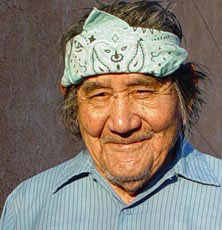Paintings and Sketches by Diné artist Harrison Begay
October 16, 2020 until November 28, 2020
This collection includes a variety of paintings and sketches by Harrison Begay, an influential Diné artist who died in 2012. Begay was incredibly prolific, and his paintings are often available on today’s market. This exhibit includes a particularly rare offering: Begay’s last known sketchbook. The sketchbook, which includes 18 pages of pencil drawings, provides a fascinating look into the process of one of the most significant Diné painters.
Begay grew up on the Navajo Reservation and painted scenes from his life and his memories. He used opaque tempera and casein paints, possibly because those were more like the earth colors used in Diné ceremonial paintings.
Navajo painting is a subtle combination of the realistic and the decorative. It is impressionistic rather than completely representational. The figures in the paintings cast no shadows and are usually themselves flat, unmodeled, and two-dimensional. A few clumps of sage and juniper suffice for the foreground, a wavy line halfway up the picture may indicate middle distance, and a single mesa may serve as the distant background. On this simple stage, Diné artists place enchanting animals and figures of Indians, the latter often on horseback. Buildings are non-existent. Everything is stylized except the animals, which are naturalistically drawn.
 This style of painting is often compared to Japanese or Chinese works and even to Persian art. One of the points of similarity between Japanese and Chinese art and that of the Diné is the simplicity and directness. The Navajo paintings are freer and more uncluttered than those of the Persian artist. Interestingly, it is unlikely that any of the early Navajo artists had ever seen a painting by an Asian artist until long after their own style of painting had been established.
This style of painting is often compared to Japanese or Chinese works and even to Persian art. One of the points of similarity between Japanese and Chinese art and that of the Diné is the simplicity and directness. The Navajo paintings are freer and more uncluttered than those of the Persian artist. Interestingly, it is unlikely that any of the early Navajo artists had ever seen a painting by an Asian artist until long after their own style of painting had been established.
The artistic style of the Navajo is innate; it was not acquired from Anglo or Asian artists. Many of the Diné artists, as children, started drawing on nearby rock walls while herding sheep. Harrison Begay was born on the Navajo Reservation and had little contact with white people until he was eight years old, when he attended the Santa Fe Indian School and studied under the tutelage of Dorothy Dunn at The Studio of the Indian School. He served in the European Theater for three years and was in the landing on the Normandy beaches and the Battle of the Bulge. After his return, he devoted his efforts to painting. He also established Tewa Enterprises in Santa Fe, where silkscreen prints of Indian paintings were made. Begay lived in Santa Fe in the latter part of his life and was well known by gallerists in the area. He was well-liked, friendly, and quite charming. He was known to have helped and encouraged young Navajo painters. [Reference: Davis, Linzee W. King. "Modern Navajo Watercolor Painting." ARIZONA HIGHWAYS vol. XXXII, no.7 (July, 1956) 30.]
Artist Image Source: Wikipedia external link via The Indigenous Research Center website. Harrison Begay at age 89 - photo by Colleen Gorman 2004.
Relative Links: Navajo, Native American Paintings, Harrison Begay
This exhibit opens Friday, October 16th and continues through Saturday, November 28th.

